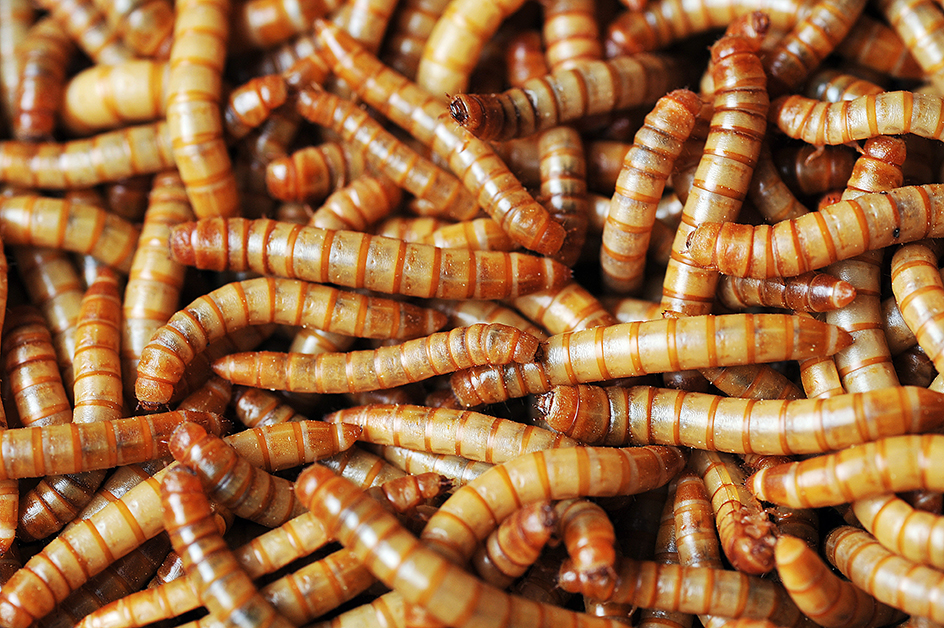Mealworm is a type of insect commonly encountered as a pest of stored grains and flour. People also grow some mealworms for use as animal feed. Mealworms are actually a type of darkling beetle, but mealworm larvae (young) have a wormlike shape. Like most insects, the larvae change form as they mature into adults.

The most widely known species (kind) of mealworm is called the yellow mealworm. Yellow mealworm larvae have a tube-shaped body with a hard shell. The shell is somewhat shiny, with a yellowish-brown color. Yellow mealworm larvae reach an average of about 1 inch (2.5 centimeters) long. Adults are only about half as long.
Yellow mealworms can do great damage as agricultural pests. However, people also grow yellow mealworm larvae for use as pet food and fish bait. Yellow mealworms are easy to grow and can eat bran or oatmeal. People feed yellow mealworm larvae to amphibians, birds, reptiles, and other animals that eat insects. Some people add the larvae to bird feeders, for nesting birds to feed to their young.
Yellow mealworms hatch from tiny white eggs. The larvae then begin to feed. As they grow, the larvae must molt—that is, they shed and regrow their body covering. The number of times the larvae molt depends on such conditions as the temperature and the availability of food. The larvae may molt 10 to 20 times, over a period of a few weeks to a few months. They then become pupae and begin metamorphosis. Metamorphosis is the transformation into adult form (see Metamorphosis). In the wild, yellow mealworms typically remain pupae over the winter and emerge as adult beetles in the spring. When grown as a food source, yellow mealworms usually remain pupae for only about 10 to 20 days. The adult beetles have brown-black wings and can live for up to two to three months. Females lay several batches of eggs during this time.
